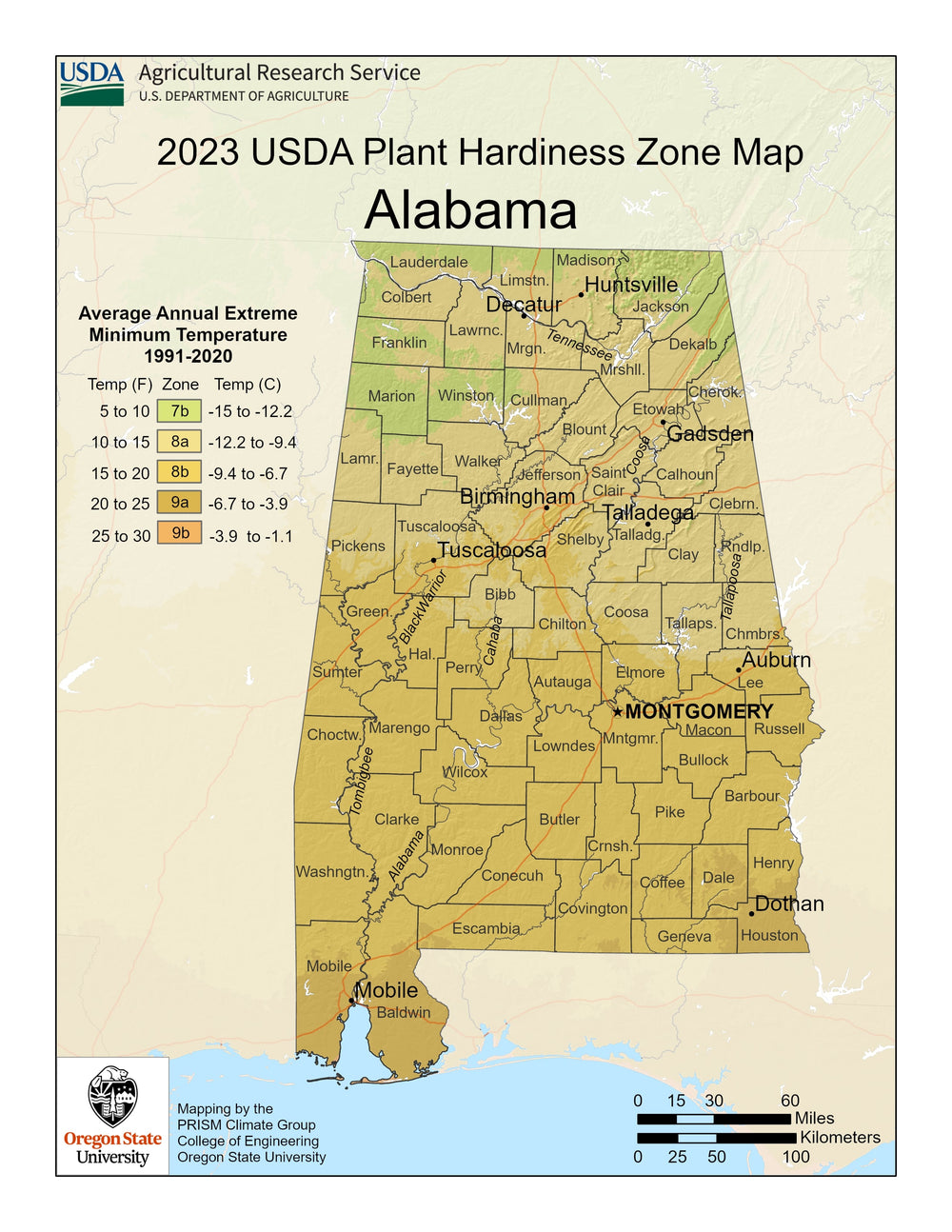Image from USDA
Characteristics of Alabama Planting Region
Alabama's humid subtropical climate is characterized by long, hot summers and short, mild winters. Most of the state receives ample rainfall throughout the year, making it one of the wettest in the US. The growing conditions vary from the Tennessee Valley in the north to the Gulf Coast in the south.
As a gardener in Alabama, you may encounter:
- High Humidity
- Intense Summer Heat
- Occasional Drought Periods
- Severe Thunderstorms
- Tropical Storms & Hurricanes
- Late Spring Frosts (in northern regions)
- Soil Erosion
Despite these challenges, Alabama offers a generous growing season. Most areas enjoy frost-free days from early April through late October, providing about 200-220 days for cultivation annually.

Challenges of Growing in Alabama
1. High Humidity
Alabama's moist climate can foster fungal diseases and pest infestations in gardens. A greenhouse can help control humidity levels and protect plants from excessive moisture.
2. Unpredictable Weather
From late spring frosts to summer heatwaves and tropical storms, Alabama's weather can be capricious. Greenhouse gardening provides a stable environment, shielding plants from sudden temperature changes and severe weather events.
3. Pest Pressure
The state's warm, humid climate is ideal for many garden pests. Greenhouses can act as a barrier, reducing pest damage and the need for chemical controls.

The Benefits of Using a Greenhouse in Alabama
While Alabama's climate allows for a long outdoor growing season, a greenhouse can enhance your gardening experience and yield.
1. Extend Your Growing Season
- Without a Greenhouse: The typical outdoor growing season runs from early April to late October in central Alabama. Northern areas may have a slightly shorter season due to later spring frosts.
- With a Greenhouse: Greenhouse owners can start planting early in February and continue well into December. This extension allows for multiple harvests and the cultivation of crops that typically struggle in Alabama's heat.
Learn more about your area's specific growing dates and the best vegetables to plant in each part of Alabama.


Customer images of their Greenhouse setup in a similar climate
2. Grow a Wider Variety of Vegetables
-
Without a Greenhouse:
Alabama's outdoor gardens thrive with heat-loving plants such as:
|
|
-
With a Greenhouse:
A controlled environment allows for a wider variety of plants, including those that prefer cooler temperatures or lower humidity.
Here's an expanded list of vegetables and fruits that can thrive in a greenhouse environment in Alabama
|
|
|

Why Planta Greenhouses?
- Wind resistant up to 65 mph (learn more about how our greenhouses hold up in high-altitude climates).
- Withstands a snow load of up to 98 psf (480kg/square meter).
- Made with a heavy-duty galvanized steel frame.
- Polycarbonate panels provide 100% protection against UV rays.
- The Sungrow greenhouse is bell-shaped - allows the wind, snow, and hail to slide off the sides.
- Extendable (Sungrow, Sigma and Farmer models can be extended beyond 100ft)
- Made in Europe and are exclusively imported
- Maintenance-free

